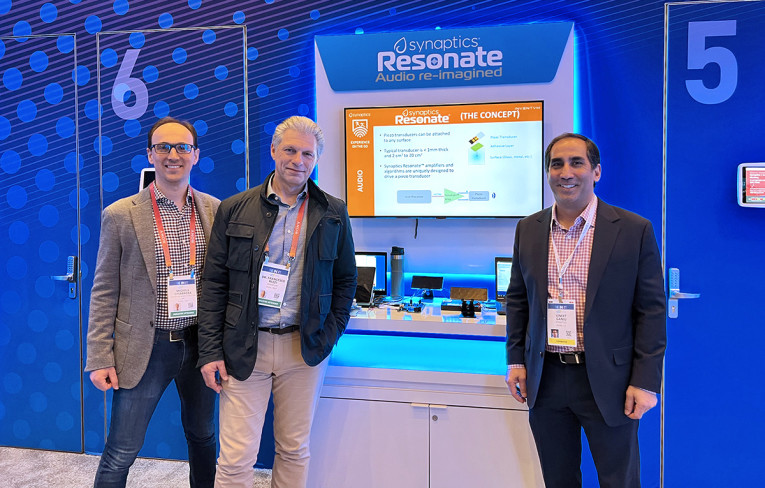
Anyone following the mobile and IT industry has seen plenty of demonstrations of display speakers, intended to replace the current flat microspeakers commonly used in smartphones, tablets or laptops, and which require an opening (port) to be able to generate sound to the outside. Since the removal of the headphone jack from smartphones, these ports and grids are the most common cause for water, dust or dirt to get inside the devices (the Lightning, USB-C ports get plenty of dirt and lint but are better protected against ingress). Having a transducer directly behind the display, using it as a radiating surface, is an alternative that has been extensively explored, but so far with little commercial success.
The advantages of removing conventional microspeakers and ports are well understood. But there are also inherent advantages in the display integration, such as the frontal sound dispersion, projected directly towards the user, enabling bigger surfaces to create a more immersive experience, while reducing space, cost, and power consumption. Combining a display transducer with haptics feedback is another natural combination, improving the user experience in touchscreen designs with a more natural interaction.
Specifically, Synaptics is promoting the Resonate solution to enable slim, bezel-less, and inherently dustproof and waterproof designs. By placing an audio and haptic transducer on the rear of the glass in embedded displays Resonate also removes important circuits normally associated to the microspeakers, thereby freeing up space, while also enabling higher quality audio, at one-third the power consumption. Conventional side-or down-firing microspeakers used in mobile devices and tablets require additional systems to counteract the directionality and distortion compromises. In laptops, having the transducer in the displays also allows expanding the keyboard and trackpad, or reducing the size of the overall design.

But using the display surface (glass, metal, etc) to generate sound, driven by piezo transducers requires an extra level of signal processing and amplification, which is the reason why Synaptics partnered with Italian company Inventvm Semiconductor. The Synaptics Resonate solution incorporates Inventvm's PiezoDrive piezo amplifier and DSP technology, creating a complete system solution to optimize the piezo transducer in any type of surface. The proprietary amplifier and algorithms generate the higher high sound pressure level (SPL) and improved loudness and fidelity, with modern, thin industrial designs.
Inventvm was founded in 2021 as a result of a management buyout of an existing R&D design center, specializing in mixed signal IC, DSP algorithms and IP development, with a specific focus on power management and audio. The company also supplies its PiezoDrive technology to TDK in their reference design for the Piezolisten piezo transducers.
At CES 2023, audioXpress checked the Synaptics Resonate demonstrations and talked to Vineet Ganju, VP and General Manager of the Audio business unit at Synaptics, where we discussed the challenges that this new approach implies, and which the company has tackled. We learned that the integrated solution and the combined technologies effectively help to solve the sound quality issue, which until now was the biggest reason why the approach has not gained much traction.
"Though display-enabled audio concepts have existed previously," says Vineet Ganju. “Synaptics’ break-through innovations enable the ability to exceed the audio performance of dynamic speakers at a fraction of the size and power consumption. For the first time, product manufacturers can reap the benefits of piezo-enabled audio and haptics."
Synaptics believes this integrated solution will allow developers to bring the discussed benefits to industrial, automotive, and consumer electronics applications such as TVs, smart appliances, portable media players, toys and gaming platforms, smartphones, automotive displays, monitors, and laptops.
Synaptics Resonate is sampling now.
www.synaptics.com/resonate








